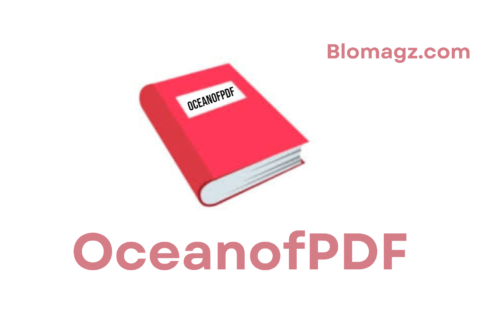Introduction to Embroidery Machine
Embroidery is the art of decorating fabric with thread, adding aesthetic and cultural significance to fashion and decor. Historically, it has represented social status and cultural identity, and today, it enhances garments and home textiles, making them unique and expressive. In fashion, embroidered pieces stand out, showcasing creativity and craftsmanship, while in decor, they elevate everyday items like cushions and wall hangings. The introduction of embroidery machine have transformed this craft, allowing for efficient production of intricate designs with high precision. These machines enable both mass production and customization, making them essential in modern textile production while preserving the artistry of embroidery.
Importance of Embroidery Machines in Modern Textile Production
Automation and Efficiency
Embroidery machines have revolutionized the way embroidery is produced. They automate the stitching process, significantly increasing efficiency compared to manual methods. This automation allows for faster production times, making it feasible to produce large quantities of embroidered items without sacrificing quality. For businesses, this translates to higher output and reduced labor costs.
Precision and Consistency
Modern embroidery machines offer unparalleled precision, ensuring that designs are replicated accurately every time. This consistency is crucial for branding purposes, especially for companies looking to maintain a uniform appearance across promotional items like uniforms and merchandise. The ability to produce intricate designs with high fidelity enhances the overall quality of the finished product.
Versatility in Design
Embroidery machines can handle a wide range of fabrics and thread types, from delicate silks to sturdy denims. They can be programmed to create complex patterns, allowing designers to experiment with various styles and techniques. This versatility opens up new possibilities for creative expression, enabling the production of unique and diverse embroidered items that cater to different tastes and markets.
Cost-Effectiveness
Investing in embroidery machines can be cost-effective for businesses. While the initial investment may be significant, the long-term savings in labor and production costs can be substantial. Additionally, the ability to customize designs easily means that businesses can adapt quickly to changing market demands without incurring high costs associated with traditional embroidery methods.
Understanding Embroidery Machines
Definition of Embroidery Machines
Embroidery machines are specialized devices designed to automate the process of stitching designs onto fabric. They utilize a needle and thread to create intricate patterns, making them essential tools for both commercial and personal embroidery projects. These machines can range from simple mechanical models to advanced computerized systems that allow for detailed design customization.
Overview of Machine Embroidery vs. Hand Embroidery
Machine embroidery differs significantly from hand embroidery. While hand embroidery involves manually stitching designs onto fabric, often requiring considerable skill and time, machine embroidery automates this process, allowing for faster production and greater consistency. Machine embroidery is commonly used in commercial settings for branding, uniform decoration, and mass production, while hand embroidery is often favored for its artisanal quality and personal touch in crafts and bespoke items.
Types of Embroidery Machines
Mechanical Embroidery Machines
Mechanical embroidery machines operate similarly to traditional sewing machines. They use a needle to pierce the fabric and create designs by pulling the thread through the material.
Description and Functionality: These machines are typically straightforward, with manual settings for stitch types and lengths. They are ideal for basic embroidery tasks and can handle various fabrics.
Pros:
- Generally more affordable than computerized models.
- Simple operation, making them suitable for beginners.
- Reliable for basic embroidery needs.
Cons:
- Limited design capabilities compared to computerized machines.
- Requires manual thread changes, which can slow down production.
- Less efficient for large-scale projects due to lower automation.
Free-Motion Machine Embroidery
How It Works and Its Applications
Free-motion machine embroidery involves lowering the feed dogs of a standard sewing machine and using a darning or embroidery foot to allow unrestricted movement of the fabric. The embroiderer manually guides the fabric in any direction, creating unique designs and patterns. This technique is often used for artistic expression, allowing for intricate, custom designs that can be applied to quilts, garments, and decorative items. Applications include personalized gifts, wall art, and textile art pieces.
Unique Features and Customization Options
One of the standout features of free-motion embroidery is the complete artistic control it offers. Users can experiment with various stitch patterns, textures, and colors, creating one-of-a-kind pieces. Customization options are vast, as embroiderers can combine different fabrics, threads, and techniques, making each project unique. Additionally, the ability to stitch on non-fabric materials, like paper and leather, expands creative possibilities.
Cornely Hand-Guided Embroidery Machines
Explanation of Operation and Artistic Control
Cornely hand-guided embroidery machines require the operator to control the speed and movement of the fabric while the machine stitches. This method allows for a high degree of artistic control, enabling the creation of complex designs such as chain stitches, satin stitches, and appliqué. The operator’s skill is crucial, as they manipulate the fabric to achieve the desired design, making it ideal for custom and intricate work.
Typical Uses in Interior Design and Custom Work
Cornely machines are often used in interior design for creating bespoke items like embroidered curtains, cushions, and upholstery. Their ability to produce detailed and decorative designs makes them suitable for custom projects that require a personal touch. Additionally, they are popular in fashion for unique embellishments on garments and accessories, allowing designers to create signature looks.
Computer-Controlled Embroidery Machines
Overview of Modern Computerized Machines
Computer-controlled embroidery machines are advanced devices designed specifically for embroidery tasks. They operate using pre-programmed designs, which can be created or imported via software. These machines can handle complex patterns with high precision and are equipped with features that streamline the embroidery process.
Features Such as Touchscreen Interfaces and Programmability
Modern computerized machines often come with touchscreen interfaces, allowing users to easily navigate through designs and settings. Programmable features enable users to adjust stitch types, lengths, and colors with ease. Many models also include built-in design libraries, USB ports for importing designs, and automatic thread trimming, enhancing both functionality and user experience. These features make computerized machines ideal for both commercial and hobbyist applications, providing efficiency and versatility in embroidery production.
Choosing the Right Embroidery Machine
Factors to Consider
Purpose (Hobby vs. Professional Use)
When selecting an embroidery machine, it’s crucial to define its intended use. For hobbyists, a basic machine that offers essential features and ease of use may suffice. These machines typically handle smaller projects and occasional use. In contrast, professionals or businesses may require advanced machines with multiple needles, larger embroidery areas, and faster stitching speeds to handle high-volume orders efficiently. Understanding your primary purpose will guide you in choosing the right model.
Budget Considerations
Embroidery machines come in a wide price range, from affordable entry-level models to high-end commercial machines. Setting a budget is essential, but it’s also important to balance cost with quality and features. Cheaper machines may lack durability or advanced capabilities, while investing in a more expensive model can lead to better performance and longevity. Consider the long-term value of the machine in relation to your needs.
Space Requirements
The physical size of the embroidery machine and the workspace available are important factors. Larger, professional machines often require dedicated space due to their size and need for additional accessories. If space is limited, consider a compact or combination machine that can function as both a sewing and embroidery machine. Ensure that your workspace can accommodate the machine comfortably without hindering your workflow.
Types of Users
Beginners: Recommended Models and Features
For beginners, it’s advisable to start with a user-friendly model that offers essential features without overwhelming complexity. Machines like the Brother SE600 or Janome Memory Craft 400E are great options. They typically include built-in designs, easy navigation, and a reasonable embroidery area, making them ideal for learning and small projects. Look for machines with good customer support and instructional resources to aid in the learning process.
Intermediate Users: Best Options for Versatility
Intermediate users may benefit from machines that offer more versatility and features. Models like the Brother PE800 or the Bernina 570 QE provide a balance between advanced capabilities and ease of use. These machines often come with larger embroidery areas, multiple built-in designs, and the ability to import custom designs. This level of functionality allows users to take on more complex projects while still being manageable.
Professionals: High-End Machines for Commercial Use
For professionals, investing in high-end, multi-needle embroidery machines is essential. Models such as the Tajima TFMX or the Brother PR1050X are designed for commercial use, featuring multiple needles for quick color changes, larger embroidery areas, and advanced software for design customization. These machines are built for durability and efficiency, making them suitable for businesses that require high production rates and the ability to handle a variety of materials and designs.
Popular Brands and Models
Brother
Brother is a leading brand in the embroidery machine market, known for its user-friendly designs and versatile functionality.
- Overview of Popular Models:
- Brother SE600: A combination sewing and embroidery machine featuring a 4″ x 4″ embroidery area, 80 built-in designs, and 103 sewing stitches. It includes a large 3.2″ LCD touchscreen for easy navigation and customization, making it ideal for beginners and hobbyists.
- Brother PE535: This model focuses solely on embroidery with a 4″ x 4″ area, 80 built-in designs, and a user-friendly interface. It allows for design import via USB, making it suitable for those looking to expand their creative options.
Janome
Janome is another reputable brand, known for its reliability and innovative features.
- Key Features and Popular Models:
- Janome Jem Gold 660: This lightweight and compact machine is perfect for beginners and quilting classes. It features an automatic needle threader, a free arm for sewing cuffs, and a convenient stitch panel for easy access to stitch options. Its portability makes it an excellent choice for those on the go.
Bernina
Bernina is celebrated for its high-quality machines that cater to both sewing and embroidery needs.
- Quality and Combination Machines: Bernina offers a range of combination machines that excel in both sewing and embroidery tasks. Their models are known for precision and durability, featuring advanced technology like the Bernina Stitch Regulator for consistent stitch quality. These machines are ideal for serious crafters and professionals looking for top-tier performance.
Husqvarna and Pfaff
Both Husqvarna and Pfaff are renowned for their innovative sewing and embroidery machines.
- Overview of Offerings and Target Markets:
- Husqvarna: Known for its user-friendly designs, Husqvarna machines often feature advanced sewing and embroidery capabilities, targeting both hobbyists and professionals. Their models include a range of built-in designs and customizable options.
- Pfaff: Pfaff machines are recognized for their precision and unique features, such as the IDT (Integrated Dual Feed) system, which ensures even fabric feeding. They cater to serious sewists and quilters, offering machines that excel in both embroidery and general sewing tasks.
Essential Features of Embroidery Machines
Built-In Designs and Patterns
Having a variety of built-in designs is crucial for users, as it allows for immediate creativity without the need for additional purchases. A diverse selection can inspire projects and make it easier to personalize items, catering to different tastes and styles.
Hooping and Stabilization
Proper hooping and stabilization techniques are essential for securing fabric during embroidery. Using the right stabilizer helps prevent fabric distortion and ensures clean, professional-looking results. Techniques such as using adhesive stabilizers or hooping methods can greatly enhance the quality of the finished embroidery.
User-Friendly Interfaces
A user-friendly interface, especially one with a touchscreen, enhances the overall experience of using an embroidery machine. Touchscreens allow for easy navigation through designs and settings, making it simpler for users to customize their projects. Intuitive controls can significantly reduce the learning curve for beginners.
Maintenance and Support
Reliable customer service and warranty options are vital for embroidery machine users. Good maintenance support ensures that users can troubleshoot issues effectively and keep their machines in optimal working condition. A solid warranty provides peace of mind, especially for higher-end models, as it protects against potential defects and repairs.
Tips for Getting Started
Basic Supplies Needed
To embark on your embroidery journey, having the right supplies is essential. Here’s an overview of the basic tools and materials you’ll need:
- Embroidery Threads: Choose high-quality threads specifically designed for machine embroidery. Polyester threads are popular due to their durability and vibrant colors, while rayon threads offer a beautiful sheen.
- Stabilizers: Stabilizers are crucial for preventing fabric distortion during embroidery. Common types include:
- Tear-Away Stabilizer: Easy to remove after stitching, suitable for woven fabrics.
- Cut-Away Stabilizer: Provides more support for knits and stretchy fabrics, remaining in place after the design is complete.
- Wash-Away Stabilizer: Ideal for delicate fabrics or intricate designs, dissolving in water.
- Hoops: Ensure you have the right size hoop for your machine and projects. Hoops keep the fabric taut and secure during stitching.
- Needles: Use embroidery-specific needles, which have a larger eye to accommodate thicker threads. Different needle types (e.g., ballpoint, sharp) are suited for various fabrics.
- Scissors: Invest in a good pair of embroidery scissors for trimming threads and fabric.
Learning Resources
To enhance your skills and knowledge in embroidery, consider the following resources:
- Online Tutorials: Websites like YouTube offer a wealth of free tutorials covering everything from basic techniques to advanced projects. Channels dedicated to sewing and embroidery can provide step-by-step guidance.
- Online Classes: Platforms like Craftsy and Skillshare offer structured courses on embroidery techniques, machine operation, and project ideas. These classes often provide a more in-depth learning experience.
- Community Forums: Joining online forums or social media groups focused on embroidery can be incredibly beneficial. Websites like Reddit or Facebook groups allow you to connect with fellow enthusiasts, share experiences, ask questions, and get tips.
Conclusion
Embroidery is a rewarding and creative hobby that can lead to beautiful, personalized projects. By understanding the different types of embroidery machines and selecting the right one for your needs, you can set yourself up for success. Gathering essential supplies and utilizing available learning resources will further enhance your skills and confidence. Whether you’re a beginner or looking to advance your techniques, the world of embroidery offers endless opportunities for creativity and expression. Embrace the journey, and enjoy the art of embroidery!
Also Read: OceanofPDF: Accessing Literature Online
FAQs
What types of embroidery machines are available?
There are three main types: domestic embroidery machines, combination sewing and embroidery machines, and professional embroidery machines. Each serves different purposes based on user needs and project scale.
Do I need a computer to use an embroidery machine?
While you need a computer to download and transfer designs, you do not need a computer to operate the embroidery machine itself. Most machines can function independently once designs are loaded.
Are embroidery machines difficult to use?
Embroidery machines can be user-friendly, especially for those familiar with sewing machines. While there may be a learning curve, many machines come with helpful manuals and tutorials.
Can an embroidery machine also sew?
Yes, many single-needle embroidery machines also have sewing capabilities, allowing users to switch between sewing and embroidery tasks seamlessly.
What supplies do I need for machine embroidery?
Essential supplies include embroidery threads, stabilizers, hoops, needles, and scissors. Additional tools like embroidery software and a USB drive for design transfer may also be beneficial.
How do I choose the right thread for my embroidery machine?
It’s recommended to use machine embroidery threads, such as polyester or rayon, which are specifically designed for durability and color vibrancy. Avoid using cotton threads, as they may break more easily.
What are some common troubleshooting tips for embroidery machines?
Common issues include thread breakage, needle breakage, and puckering. Ensure you use the correct needle and thread, maintain proper tension, and regularly clean your machine to prevent these problems.






